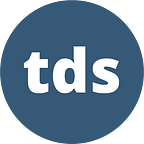Python and Beyond: Expand Your Data Science Programming Toolkit
The amount of code that data scientists have to write as part of their job varies greatly across organizations and projects, and so does its level of complexity. Regardless of where you land on the programming-intensity spectrum, though, it’s hard to argue against the value of adding depth and range to your coding skills.
To support you on this journey, we’ve gathered several stellar guides to help you broaden your horizons beyond the Python basics you’ve (likely) mastered early on in your data science training.
From the fundamentals of learning new languages to the emerging frontier of quantum computing, there should be enough here for any data practitioner to choose their own adventure.
- Focus on performance. Your code is always a means to an end; in business contexts, writing it inefficiently can have a real negative effect on the bottom line. As Naomi Kriger demonstrates in a walkthrough of a recent latency-improvement project, a few small changes can make a major difference.
- The art of the pivot. Susan Maina’s guide to Pandas pivot tables is a handy one-stop resource. It covers the nitty-gritty details of manipulating data through this tool, and—even more important— explains when pivot tables should be used and what kinds of insights they can help generate.
- Become a multilingual programmer. There are many reasons a data scientist might decide to dive into a second (or third) programming language: it could be a necessary step towards landing an exciting job, or you might just feel the urge to explore something new. Kay Jan Wong’s primer on learning new languages is a must-read regardless of your motivation.
- Julia aficionados of the world, unite! Emma Boudreau has been working with the Julia language for about six years and has seen its powerful abilities in action many times. Emma’s new compendium brings together no fewer than 20 tips and tricks for anyone else who’d like to give their Julia-based workflows a boost.
- Develop some SQL muscle. From one of the newest languages we turn to a trusty, grizzled old-timer: SQL. It might be approaching its 50th (!) anniversary—an eternity for any recent technology—but data professionals still use it daily, and Matt Sosna’s roundup of “riddles” will push you to sharpen your querying craft.
- Taking a quantum leap. If recent conversations on quantum computing have left you confused, or at least not entirely sure what this emerging technology is all about, don’t miss Kory Becker’s accessible introduction. It walks us through some of the core basic concepts, and then encourages readers to program their very own magic-number guessing game with Python and the Qiskit library.
- Tackle real-world problems. Would you like to harness your programming skills to help promote sustainability and vibrant, liveable communities? Whether you’re looking for inspiration, concrete guidance, or both, we recently published a comprehensive collection of articles that cover urban planning, supply chain optimization, and wildlife conservation (among other topics), and many of them include a strong hands-on coding component.
We hope you enjoyed our recommendations this week! If you’d like to support the work we publish, consider becoming a Medium member.
Until the next Variable,
TDS Editors
